Lowering Costs And Changing Testing Parameters With Advanced Systems
- By Sharad Matade
- April 17, 2025
The tyre industry is navigating a complex landscape of rising material costs, geopolitical uncertainties and fierce competition. In response, manufacturers are turning to automation, Industry 4.0 and AI-driven solutions to enhance efficiency and reduce operational expenses. Advanced testing and measurement systems are pivotal in this transition, offering cost-effective quality control, streamlined production and improved consistency. However, integrating these innovations poses challenges, including adapting to evolving tyre designs and meeting stricter OEM requirements. This article explores how technological advancements in tyre testing are reshaping the industry, ensuring performance precision and economic viability in an increasingly competitive market.
Increasing raw material prices, geopolitical crises, rising freight costs and stronger competition have led tyre companies to find ways to lower operational costs. Technological breakthroughs like automation, Industry 4.0, etc. are a boon in disguise in this hour of need. While automation is not a new concept, its usage gradually increases within the tyre industry, riding on the back of other advancements.
Micro-Poise Measurement Systems Division Vice President & Chief Technology Officer Dr Shaun M Immel believes that the ever-increasing need for automation and data connectivity to support Industry 4.0 is driving tyre manufacturers to adopt advanced measurement systems that lower inspection costs, enhance consistency and provide critical data for analytics.
“Simultaneously, manufacturers seek improved equipment throughput while maintaining high measurement quality to meet tightening tyre screening requirements. The growing variety of electric vehicle (EV) tyre designs necessitates greater measurement system flexibility to support a larger number of stock-keeping units (SKUs). Additionally, customers increasingly require user-friendly systems that accommodate inexperienced personnel by presenting simple-to-use and highly automated products,” he added while speaking exclusively to Tyre Trends.
The tyre testing industry has significantly transformed over the past five years. Automation cuts measurement and inspection costs while improving consistency and predictability, allowing manufacturers to redeploy labour to higher-value tasks. It also enables precise, data-driven decision-making by replacing subjective human evaluations with quantifiable metrics, ensuring better process control and continuous improvement.
As tyres grow larger and heavier, automation presents new challenges, but advancements in artificial intelligence (AI), faster processing power and GPU technology are making implementation more feasible and cost-effective. These innovations are fuelling a resurgence in automation, enhancing efficiency and providing manufacturers with deeper insights into production quality and performance.
However, he noted that while including sustainable materials within tyre compounds is strong founded within tyre makers, it is not likely to affect testing strongly. “The shift towards sustainable materials in tyre manufacturing is reshaping the industry. While this evolution may impact tyre design materials and manufacturing processes, it will not significantly alter the core processes of final finish testing. Testing equipment focuses on force variation, dynamic balance, X-ray analysis and geometry measurement, and it remains largely unaffected as long as tyre sizes stay within standard categories. However, as manufacturers integrate new compounds and materials, potential changes in tyre behaviour may lead to adjustments in testing methodologies to address emerging manufacturing challenges,” said Dr Immel.
PARADIGM EVOLUTION
The tyre industry is undergoing a strategic shift. Top-tier manufacturers are moving away from mass production to focus on high-performance and premium tyres, consolidating production into specialised plants for passenger, truck and OTR tyres. This shift is driven by increasing competition from Asian manufacturers dominating the mass-market segment. At the same time, some Asian players are pushing into the premium space, intensifying competition at the high end.
This evolving landscape reinforces the demand for precision testing, high measurement quality and faster throughput. “Our longstanding partnerships with tier-one manufacturers position us well in this premium market, particularly in the 18-inch-and-above segment, where measurement accuracy and reliability are critical and where Micro-Poise’s measurement systems excel. As the industry diversifies, we continue to enhance our equipment’s flexibility and feature set to meet the evolving needs of both established premium brands and emerging challengers,” said Dr Immel.
Furthermore, Dr Immel noted that the testing industry is undergoing significant advancements with a strong focus on increasing throughput while meeting increasingly stringent quality requirements. “Tyre manufacturers face tightening OEM screening limits, necessitating greater accuracy and repeatability in measurement systems to ensure precise and proper classification of tyres for various markets. Traditionally, higher throughput and improved measurement repeatability are a trade-off, but the industry is now working to improve both simultaneously, requiring innovative approaches,” he said.
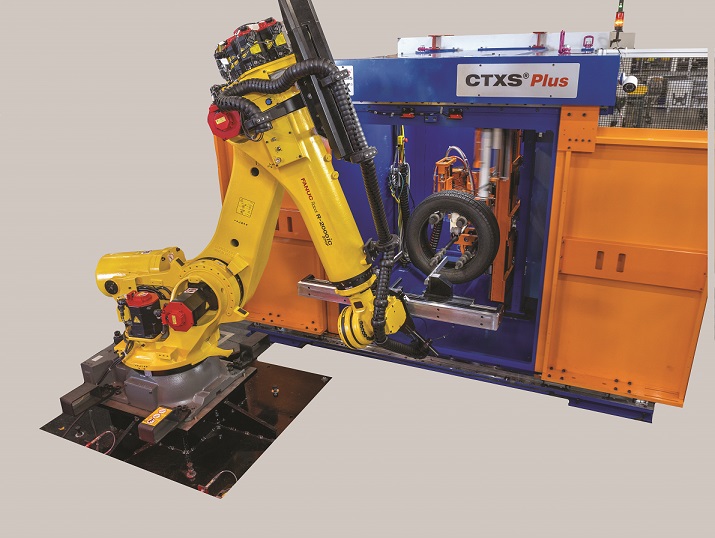
“A notable shift, particularly influenced by EVs, is the growing demand for higher frequency content in geometry and uniformity measurements. As EVs eliminate engine noise, tyres have become the dominant source of road noise, prompting manufacturers to analyse higher-frequency variations that could contribute to unwanted sound. These variations, often linked to tread design and tyre construction, are now being examined more closely for tyre-to-tyre variation to mitigate its impact,” he added.
He also contended that regulatory trends and market dynamics are driving further changes beyond noise control. The rise of EVs has significantly expanded the number of SKUs manufacturers must manage, pushing the need for greater equipment flexibility and quicker changeover.
“With tyre designs evolving rapidly, testing systems must adapt through quick-change tooling and advanced marking capabilities to accommodate frequent model shifts. At the same time, manufacturers continue to push for higher throughput without compromising measurement and inspection performance, reinforcing the need for cutting-edge solutions that balance speed, accuracy and adaptability in an increasingly complex landscape,” he added.
MEASURING PARAMETERS
According to Dr Immel, the time required to measure and assess a single tyre depends on the type of test(s) being conducted. A typical measurement cycle may range between 15 and 30 seconds, depending on the tyre size, the required tyre ‘warmup’ time, and the measurements being performed. The key to high-quality final finish equipment is to ensure high throughput while maintaining the measurement performance necessary for accurate quality assessments.
Explaining the quality measurement process, he said, “Quality measurement in tyre testing hinges on two fundamental aspects, accuracy and repeatability. Accuracy refers to each measurement’s ability to reflect the tyre’s true assessment value and characteristics, a non-trivial task given the inherent variability in production tyre measurement. Manufacturers rely on these values to determine whether a tyre meets quality standards or should be scrapped.”
Repeatability, on the other hand, measures measurement consistency. Sophisticated technology minimises measurement variations of production tyres, ensuring that the system can effectively differentiate between acceptable and defective products. The financial impact of incorrect classifications, whether approving a faulty tyre or rejecting a good one, is substantial, making excellent system measurement performance a critical factor in reducing long-term operational costs.
Answering what tyre screening limits are acceptable to the market, he said, “The acceptable limits are proprietary to each tyre manufacturer. Each manufacturer receives screening limits from original equipment (OE) manufacturers and select replacement market dealers. These OE and replacement screening limits vary across players. Beyond that, tyre companies often impose stricter internal limits to enhance quality, improve customer perception or differentiate products.”
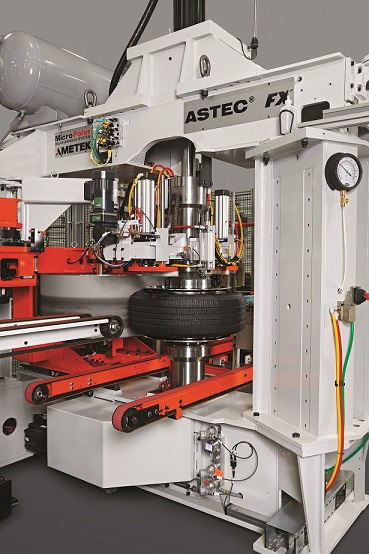 Alluding to whether the industry is more concerned about variation in passenger car tyres than in TBR or OTR tyres, he explained, “The industry is indeed more focused on variations in PCR, but I believe that’s largely due to volume. Passenger car tyres are produced in significantly higher numbers, and since they are consumer-facing products, expectations are much higher. People notice and care about ride quality, so manufacturers focus heavily on minimising tyre-to-tyre variations.”
Alluding to whether the industry is more concerned about variation in passenger car tyres than in TBR or OTR tyres, he explained, “The industry is indeed more focused on variations in PCR, but I believe that’s largely due to volume. Passenger car tyres are produced in significantly higher numbers, and since they are consumer-facing products, expectations are much higher. People notice and care about ride quality, so manufacturers focus heavily on minimising tyre-to-tyre variations.”
“However, even in the TBR segment, certain types like steer and drive tyres undergo strict testing and must meet high standards. Steer tyres, in particular, incorporate advanced technology because they directly impact vehicle handling and safety. Trailer tyres, on the other hand, face less scrutiny since they directly affect ride comfort. That said, manufacturers across all segments are under continuous pressure to tighten tolerances. OEMs and fleet operators are always pushing for lower limits, forcing tyre makers to improve,” he added.
The company is advancing tyre grading technology with a data-driven approach that moves beyond traditional tyre metrics. Developing and integrating alternative measurements aims to refine performance assessments, ensuring a closer correlation between lab results and real-world ride quality. This shift could boost product yields while maintaining more stringent standards, enabling a ‘smarter’ assessment of tyre quality.
When asked about the causes of early tyre failure and how geometry plays a role in identifying defects, he explained that issues in ply splicing during manufacturing can lead to structural weaknesses. If the ply material splice is left open, missing ply cords create a bulge defect when the tyre is inflated under high pressure.
This bulge, a critical measurement in quality control, appears radially along the sidewall and is a standard defect monitored by tyre manufacturers. If the bulge exceeds acceptable limits, it can cause the inner liner to become voided, leading to slow air loss and deflation – an irreparable but not necessarily catastrophic failure mode.
Dr Immel also noted that the company has developed several features to enhance flexibility. “We have an automatic rim change feature with adaptable tooling that streamlines adjustments. We’re also exploring innovations to improve changeover efficiency further. One of our key advantages is that when a tyre enters the system – even if it’s a single unit – we can immediately identify it, load the correct parameters and process it without any cycle time penalty. Unlike other machines requiring manual adjustments and extra cycle time, ours can handle small lot sizes and frequent model changes seamlessly,” informed Dr Immel.
When asked whether every tyre produced on the line is measured, Dr Immel explained that almost all OE tyres undergo screening to meet strict screening limits. For the replacement market, tyre manufacturers screen a varying percentage of products, depending on customer requirements and market strategy. While nearly 100 percent of OE tyres is tested, the extent of screening for replacement tyres varies across manufacturers and customers.
PRODUCT CATALOGUE
Micro-Poise Measuring Systems’ ASTEC FX system evaluates critical parameters such as force variation, while Micro-Poise’s TGIS FS system evaluates tyre runout and sidewall appearance. While these factors primarily influence ride comfort rather than direct safety, they play a role in detecting defects that could lead to premature tyre failure. “Some of these defects have been monitored for decades, forming an industry benchmark,” noted Dr Immel.
When discussing the process of force variation measurement, the executive compared a tyre to a system of parallel springs, where each section should ideally have the same spring constant or stiffness around the tyre. However, variations in manufacturing such as splices, component alignments and positioning errors can create inconsistencies, making certain areas stiffer or softer than others, resulting in a variation of the force the tyre induces into a vehicle while driving.
A load wheel presses into the tyres while it rotates to detect these variations, measuring force fluctuations. Higher force readings indicate stiffer areas, while lower ones suggest softer regions. This data is analysed using Fourier analysis, breaking it down into harmonics to help manufacturers ensure that force variation at certain frequencies remains within acceptable limits.
The US-headquartered company’s ITMS FX (Integrated Tire Measurement System) minimises testing cycle times while integrating and maintaining excellent measurement quality across force variation, dynamic balance and geometry measurements. In high-volume manufacturing, any cycle time advantage can significantly impact overall throughput, driving up the overall equipment value for the customer. “It’s always about how fast you can get the process done – get one tyre out, bring the next in and repeat,” Dr Immel explained.
Beyond speed, system reliability is equally important. Fully automated testing systems need to run continuously with minimal stoppages. “If a fault occurs, recovery must be instant,” he added. However, increasing speed without sacrificing measurement quality presents an inherent challenge.
The company’s Tire Geometry Inspection System (TGIS FS) integrates proprietary tyre-optimised 3D sensors to inspect sidewall geometry accurately. The system employs three strategically placed sensors in fixed locations – one each on the top lateral, radial and bottom lateral surfaces – to complete a full geometric scan in a single tyre revolution. The result is a micron-resolution contour of the entire tyre. This data supports defect detection, dimensional measurements and process optimisation. The system is adaptable across Micro-Poise’s force variation (uniformity), dynamic balance machines and various competitive equipment.
The company is reinforcing its position as the ‘automation partner of choice’ for tyre manufacturers, supported by the fact that it has always focused exclusively on final finish solutions. The company is driving towards fully automated ‘Lights Out’ operations, ensuring maximum efficiency and cost-effectiveness across all its products.
Key advancements include revolutionary throughput enhancements that significantly improve final finish processes without adding costs, ease-of-use innovations that simplify complex systems for less experienced operators and increased flexibility through automated changeovers to address the growing number of SKUs in tyre production.
Additionally, it is advancing automated inspection and defect detection by helping its customers shift from manual to autonomous inspection, which encompasses more precise numerical measurements, reduced errors and a reduction in overall inspection costs.
A major breakthrough in this area is the integration of AI and deep learning (DL) into its Coll-Tech Automatic Defect Recognition (ADR) software for tyre X-ray image analysis. Showcased at the 2024 Tire Tech Expo, the latest advancements have dramatically improved defect detection accuracy and responsiveness to customer configuration and customisation requests.
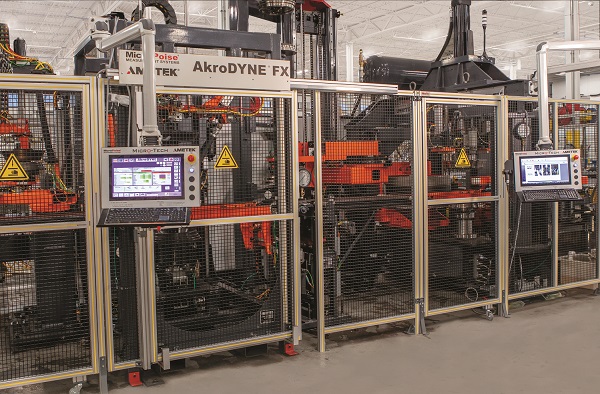
“Previously, algorithmic versions required extended response times for adaptation and modification, but the AI-driven enhancements have eliminated this delay. Multiple manufacturing facilities are now operating their ADR-equipped X-ray systems without human inspectors, allowing personnel to be redeployed elsewhere while significantly reducing inspection expenses. The transition to full autonomous inspection is a learning process that requires adaptation, but the investment yields substantial positive financial returns. Micro-Poise’s ADR system allows our customers to control the pace and number of steps in the journey to full autonomous inspection. To facilitate adoption, we offer image evaluations, follow-up consultations and in-plant demonstrations,” said Dr Immel.
Beyond inspection advancements, Micro-Poise has also improved tyre grinding systems, enhancing both functional system performance and the visual appearance of ground tyres.
Historically, tyre grinding – used for force variation and geometry optimisation – has been instrumental in converting rejected tyres into OE-grade products. However, some manufacturers hesitate to adopt grinding due to concerns about visible grind marks. Micro-Poise has addressed these concerns by refining the grind appearance and adding new functionalities that turn tyre grinding from an art into a precise science. These innovations increase product yield, improve tyre grading and deliver a strong return on investment for manufacturers. With AI-driven defect detection, automation advancements and improved tyre yield solutions, Micro-Poise is setting new standards for efficiency, accuracy and cost savings in the final finish stage of tyre manufacturing.
The company continuously refines its technology, balancing cost efficiency with high performance. “Customers request additional features based on unique measurement methodologies and defect detection requirements,” Dr Immel said.
Customers expect the machines to operate for decades. Mechanically, the company’s systems are built for longevity, but electronics and software evolve much faster. To address obsolescence, the company offers modular control system upgrades bundled with new features, ensuring customers gain added value while modernising their equipment and extending its lifecycle.
In the context of retrofitting, Dr Immel said, “We design machines to accommodate sensor and measurement upgrades, enabling customers to integrate new parameters without replacing entire systems. The balance lies in designing robust mechanical structures while allowing flexibility in electronics and software.”
ADDRESSING CHALLENGES
Developing intuitive, easy-to-use machines is an ongoing challenge. “Simplifying a machine while maintaining its capabilities is often harder than designing a complex system,” Dr Immel noted.
The company has invested in UX/UI enhancements to improve operator efficiency and ease of use.
Furthermore, the tyre industry is currently facing one of its most dynamic and challenging periods, driven by rapid technological advancements, shifting regulations, sustainability initiatives and the rise of EVs.
One of the biggest challenges is aligning new technologies with practical applications that benefit customers while ensuring their confidence in these innovations. AI and automation, for example, are transforming manufacturing processes, but their complexity can be daunting for tyre producers who must navigate ever-changing market demands.
Additionally, external factors such as tariffs, trade wars and regulatory changes add another layer of uncertainty, making it critical to choose the right technologies that will bring long-term value.
Sustainability is another key concern as tyre manufacturers work to reduce environmental impact through raw material innovations, renewable energy adoption and energy-efficient manufacturing processes.
While the company does not directly influence the chemical composition of tyres, it contributes to sustainability by designing testing and measurement equipment that uses less energy and air.
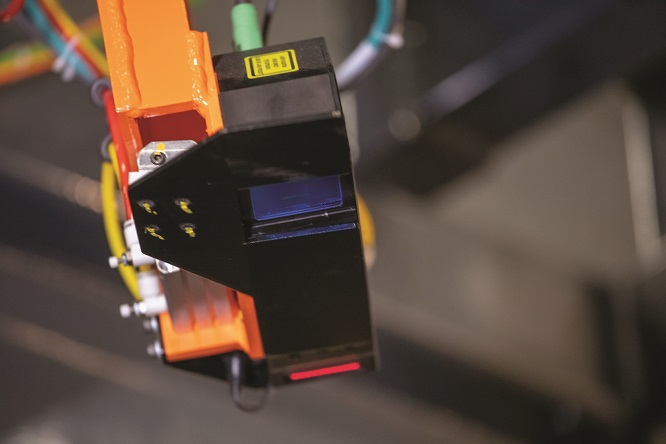
With AI-driven automation, faster cycle times and a strong focus on usability and upgradeability, it continues to push the boundaries of tyre testing technology. As the industry embraces data-driven solutions, the company remains at the forefront of precision measurement and defect detection.
FUTURE FOCUS
The industry is undoubtedly shifting towards fundamental measurement improvements and enhanced features like predictive maintenance, retrofitment and software upgrades.
“While reducing testing time and improving efficiency remain core priorities, there is an increasing demand for smart, automated solutions that can provide deeper insights into machine performance. Predictive maintenance is an exciting development area, but it is still in its early stages. The ultimate vision is to have intelligent software capable of real-time monitoring systems and predicting failures with precision. However, before reaching that stage, the focus is on establishing a solid data foundation and ensuring rapid recovery when issues arise,” averred Dr Immel.
To address these challenges, the industry is exploring soft sensor technology as a potential alternative to expensive hardware-based monitoring systems. These advancements could reduce reliance on physical sensors while still enabling predictive maintenance capabilities. As the industry moves forward, manufacturers must balance cost, efficiency and long-term viability to maximise the benefits of these innovations.
“The integration of AI and DL technologies is poised to continue, though adoption will likely be measured as manufacturers proceed with caution. While some advancements will prove transformative, others may fade over time. AI-driven systems can significantly improve productivity by shortening design and improvement cycles, making processes more efficient. Additionally, AI models can refine their accuracy over time through continuous feedback and training, leading to smarter and more effective applications in manufacturing,” he added.
He also noted that one key concern is the potential burden on customers. Some AI implementations risk shifting performance optimisation responsibilities such as defect evaluation, labelling and training onto end users. While this may be expected in later stages of adoption, it presents a significant challenge in the early phases, making seamless integration into existing workflows critical.
Another significant area of advancement is tyre grinding technology. While some manufacturers hesitate to use grinding due to concerns over visual imperfections, it remains a valuable and financially beneficial process for refining tyres that exceed variation limits.
Recent innovations aim to standardise and automate grinding, transforming it from an art into a precise, science-driven method. These advancements make the process more efficient and user-friendly, ensuring higher-quality output without compromising visual appearance. n
Micro-Poise TGIS FS Geometry Sensor
Trelleborg Tires Retains Crown As Brazil's Best Agriculture Tyre
- By TT News
- December 07, 2025
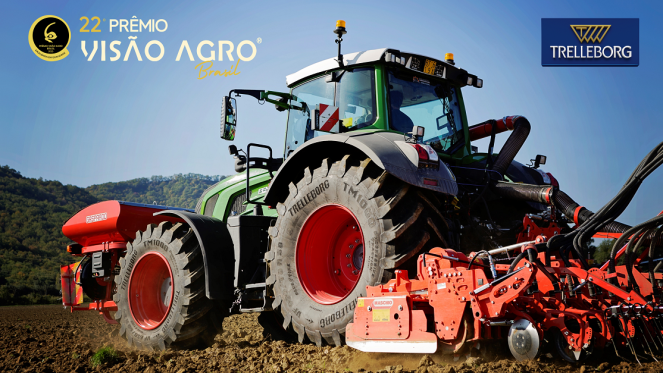
For the second consecutive year, Trelleborg Tires has earned the prestigious title of Best Agriculture Tyre at the 22nd Visão Agro Brazil Awards. This 2025 accolade, presented during a ceremony in Ribeirão Preto, highlights the company’s dedicated role in advancing Brazilian agribusiness through technological leadership and a commitment to sustainable practices. The award was received on behalf of the company by Fábio Metidieri, Agri Sales Director for Yokohama TWS Brasil.
Central to this achievement is Trelleborg’s ongoing innovation, particularly the expansion of its ProgressiveTraction technology within the TM tyre series. This engineering, featured in models from the row-crop TM600 to the high-horsepower TM1000, utilises a dual-edge lug design. The tread operates progressively on the soil to enhance traction, promote self-cleaning and minimise vibration. The resulting benefits include improved operational efficiency, increased tyre durability and superior soil protection, directly supporting farmers’ goals for greater productivity and environmental stewardship.
The company’s deep roots in Brazil, supported by a specialised local team, rigorous field testing and strong manufacturer partnerships, ensure its solutions are finely tuned to regional demands. This local infrastructure allows for responsive technical service and keeps product development closely connected to the practical challenges faced by the agricultural sector. The Visão Agro Brazil Awards, judged by a panel of industry executives and researchers, serve as a recognised benchmark for innovation and performance, making this recognition a significant testament to Trelleborg Tires’ impact on the country’s farming landscape.
Metidieri said, “Receiving this award at such a prestigious event once again reinforces our commitment to Brazilian agriculture. Our goal is to keep advancing in technology and field performance, ensuring that every Trelleborg tyre delivers real value – helping farmers operate more efficiently, sustainably and profitably. This award reflects the trust placed in our team and our products by professionals throughout the sector. It strengthens our commitment to delivering technologies that address local challenges and help shape the future of Brazilian farming.”
Premium Makeover
- By Sharad Matade
- December 05, 2025
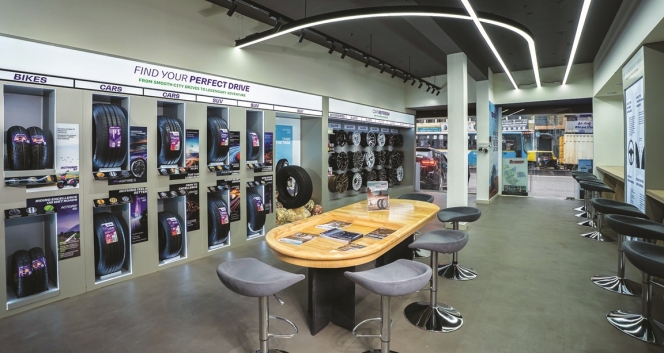
India’s tyre retail industry is undergoing a dramatic makeover, moving far beyond the cluttered workshops and transactional buying of the past. Fuelled by rising demand for premium vehicles, digital-first customers and stronger export momentum, tyre makers are transforming retail spaces into sleek, immersive experience centres. What was once a routine utility purchase is rapidly evolving into a premium, advisory-led mobility experience designed for a new generation of motorists.
India’s tyre retail scene is shifting gears, leaving behind the era of crowded workshops and impersonal counters. In their place, manufacturers are rolling out sleek, thoughtfully designed, tech-powered spaces that echo the luxury of high-end car showrooms. What started as a few bold pilots in big cities has quickly become the go-to playbook for tyre brands eager to win over a new generation of savvy, comfort-loving, digital-first customers.
From urban to rural areas, this transformation reveals a profound change in how Indians approach mobility. Today’s motorists – especially those behind the wheel of SUVs, luxury sedans and electric cars – want more than just a tyre swap. They crave expert advice, a polished atmosphere and a shopping experience that reflects the elegance of their vehicles. Once a utilitarian afterthought, tyre retail is now emerging as a coveted part of the automotive journey.
Strong OEMs and replacement demand in both domestic and export markets underpin the transition.
In FY 24-25, tyre exports from India surged by nine percent year-on-year to INR 251 billion, according to data released by the Ministry of Commerce. With an estimated annual turnover of INR 1 trillion and exports exceeding INR 250 billion, the Indian tyre industry stands out as one of the few manufacturing sectors in the country with a high export-to-turnover ratio.
Though tyre exports have hit a speed bump due to higher US tariffs on select categories of Indian tyres compared to those of competing nations, the long-term prospects for the Indian tyre industry remain strong. According to a joint report by ATMA and PwC India titled ‘Viksit Bharat 2047: Vision and Roadmap for the Indian Tyre Industry’, India’s tyre production volumes are projected to grow nearly fourfold by 2047, while industry revenues are expected to expand almost 12 times to about INR 13 trillion.
Against this backdrop, tyre makers are modernising aggressively to retain customers and build a more profound emotional affinity. The broad shift is visible in how retailers are reinventing their spaces. Lounges with crafted lighting, upholstered seating, minimalist décor and large digital walls are replacing traditional steel racks and dusty counters. Informational murals and heritage display trace decades of tyre innovation, strengthening brand storytelling. Stores increasingly feature curated experience zones where customers can explore tyre technologies, EV-compatible profiles, eco-friendly materials and performance characteristics through visual displays and interactive tools.
A clear sign of this trend is the rise of personalised, advisory-led engagement, replacing the old dependence on technicians. Retailers now profile driving habits, terrain usage, daily distance and vehicle type to recommend tyres customised to each consumer’s pattern. This service-led model is shifting the customer’s mindset from price-first decision-making to long-term value evaluation.
The new premium outlets are designed to deliver a lifestyle-driven, hospitality-grade experience rather than a traditional tyre shop visit. Customers receive personalised mobility recommendations tailored to their vehicle, driving style and needs, supported by smart service innovations like intelligent product selection, quick-fit services and digital scheduling. The space also acts as a community hub for driving enthusiasts, creating a connected ecosystem around the brand. With lounge-style comfort, immersive storytelling and specialised tyre and service packages for luxury and performance vehicles, the outlet blends convenience, premium care and brand-centric offerings into an elevated customer experience.
“Customer experience at the point of sale is another branding exercise poised to change buyer characteristics. Multi-brand outlets often commoditise the tyre-buying experience. That’s why companies are launching exclusive brand outlets with curated customer experiences. Over the next decade, new delivery models will emerge,” said Kavan Mukhtyar, Partner and Leader – Automotive, PwC India.
Apollo Tyres articulates this change as a move towards lifestyle-led retailing. Its new super-premium outlets have been built not as showrooms but as emotionally resonant spaces.
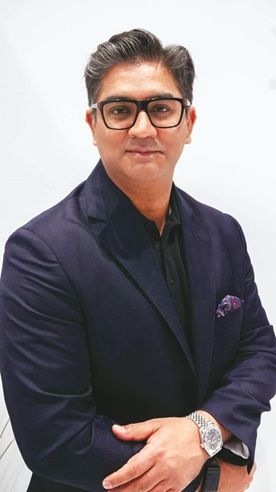
Udyan Ghai, Group Head of Marketing at Apollo Tyres, explained that the company’s new retail architecture is anchored in long-term strategic priorities: “Our move to a lifestyle-led, immersive tyre retail format is driven by our own desire for premiumisation and category leadership. We are looking at elevating tyre retail in India by setting new benchmarks and shifting from commodity selling to a premium, lifestyle-driven experience.”
He said the brand aims to ‘emotionally engage with customers, offer tailored solutions, build a community of driving enthusiasts and tap into premium segments – all while delivering a differentiated, modern retail experience’.
Ghai believes retail ambience plays a decisive role in influencing perception. “A relaxed and well-designed lounge signals comfort, trust and premium value,” he said, adding that such environments elevate tyres from a mundane requirement to a core element of vehicle care and identity.
Digital transparency, he believes, is the second pillar of modern tyre retail. “Digital systems ensure transparency and help demystify tyre selection – tread patterns, speed ratings, durability and fitment. Consumers feel less dependent on a technician’s word and more in control, which boosts their confidence and perceived fairness,” Ghai said.
Customers today are inundated with choices, and digital systems, he said, turn tyre buying into an ‘informed, personalised decision’, comparable to selecting a smartphone, a pair of performance shoes or even a detailed insurance plan. According to Ghai, this new retail model is ‘a strategic investment in the future of mobility retail’, designed to be scalable and to support community-building events, workshops and enthusiast interactions. As India moves towards EVs and connected cars, he said these premium outlets will provide EV-focused tyre expertise, interactive digital tools and personalised recommendations that appeal to younger, digitally savvy motorists.
CEAT shares a similar philosophy. Its national retail revamp focuses heavily on digital immersion, consistent messaging and design-led layouts. Lakshminarayanan B, the company’s Chief Marketing Officer, said the modernised CEAT Shoppes are fundamentally reshaping the category.
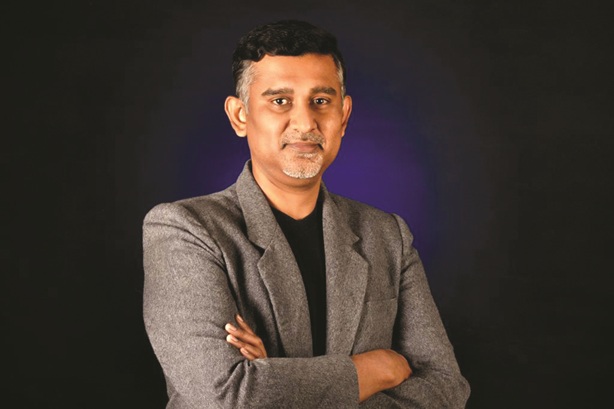
“The modern layouts and digital integration in CEAT Shoppes are revolutionising the tyre-buying experience, making it more experiential and customer-centric,” he said, adding that these updated outlets elevate the experience, build trust through uniform communication and drive decisions by reducing ambiguity around features and value.
Lakshminarayanan highlighted CEAT’s attempt to harmonise customer experience across demographics: “The approach in urban markets through premium stores, product offerings and services is to create access and aspiration for premium customers. The same is replicated in upcountry markets also.”
The CEAT Executive said the company is building for a future where personalisation will be the defining characteristic of tyre retail. “CEAT is focused to drive the future of tyre retail through end-to-end personalisation,” he said.
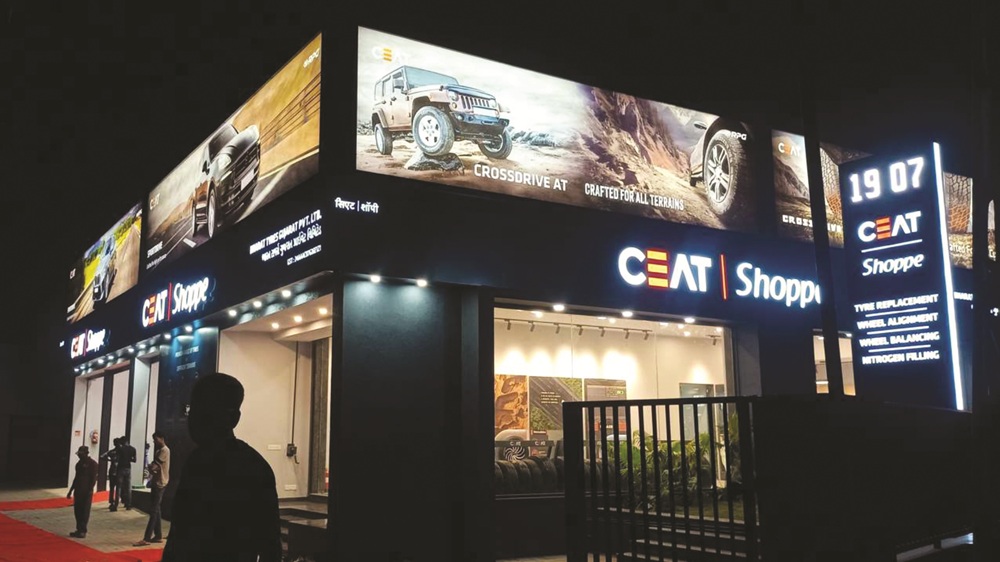
As experiential retail takes hold, service portfolios inside tyre stores are expanding faster than ever. Advanced wheel balancing, laser-driven alignment systems, nitrogen inflation, premium alloy wheel installations, EV-oriented tyre consultations, digital appointment scheduling and real-time tyre-health diagnostics are now standard. Many outlets also provide car detailing, interior cleaning, ceramic coating, PPF application, brake checks, battery inspections and multi-point vehicle health reports, making them full-fledged mobility centres.
Global players have pushed the envelope even further. Michelin’s 25,000-square-foot Experience Store in Nashik features a heritage wall and innovation displays showcasing electric mobility, materials science and environmental responsibility. It houses precision wheel-alignment bays, detailing studios, and accessory galleries. “We are proud to unveil Michelin’s first Experience Centre in India. The sole purpose of this store is to go beyond traditional tyre retail and provide customers with an immersive experience of the brand,” said Shantanu Deshpande, Managing Director of Michelin India.
Continental Tyres is also strengthening India’s premium retail ecosystem through its CPD outlets, which include ambient lounges, diagnostic equipment, premium alloy wheels and digitally enabled guidance. “With our new CPD store in Indore, we bring Continental’s promise of safety, innovation and comfort closer to Madhya Pradesh’s clients,” said Samir Gupta, Managing Director of Continental Tyres India. He added that the brand’s ‘In the Market, For the Market’ approach is central to its retail expansion strategy.
Even in rural markets, tyre retail is becoming more formalised, structured and service-oriented. JK Tyre’s ‘Steel Wheels’ format is targeted at towns with populations under 100,000 and offers standardised layouts, value-added services, best-in-market pricing and instant claim facilities. “Our Rural expansion programme will help us reach the interiors of the real Bharat that is economically vibrant but often underserved. We are not just building retail points; we are also enabling entrepreneurship and access,” said Managing Director Anshuman Singhania.
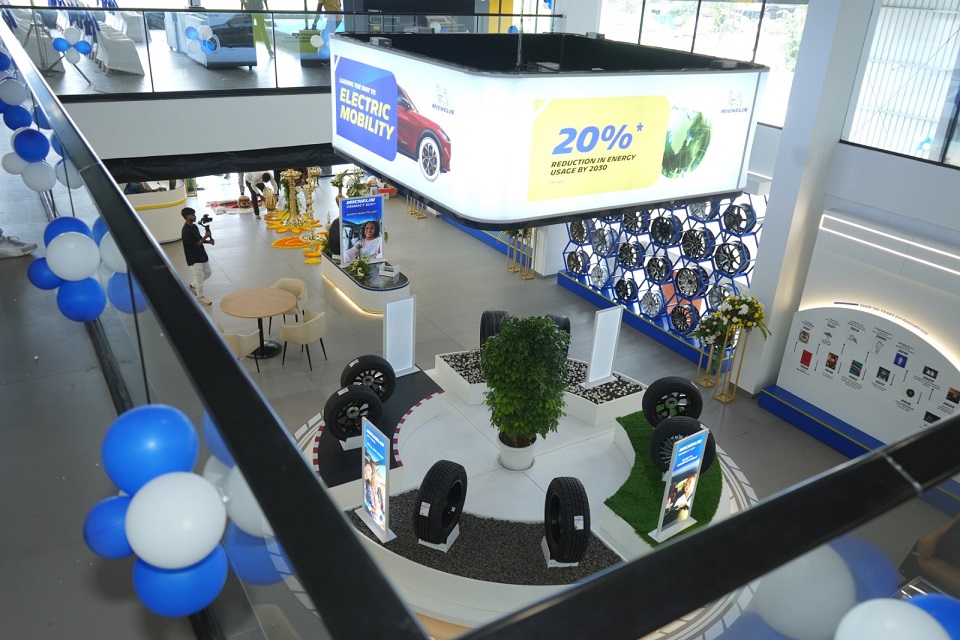 Together, these developments mark a decisive shift in how tyre brands engage customers. Tyre stores are increasingly functioning as lifestyle environments, designed for comfort, informed decision-making, personalisation, transparency and community. The industry is moving away from a product-first mindset to a customer-experience-led philosophy.
Together, these developments mark a decisive shift in how tyre brands engage customers. Tyre stores are increasingly functioning as lifestyle environments, designed for comfort, informed decision-making, personalisation, transparency and community. The industry is moving away from a product-first mindset to a customer-experience-led philosophy.
As premium cars, SUVs and EVs become mainstream, and as younger motorists prioritise digital empowerment and ambience, tyre retailers are aligning with these new expectations. India’s tyre makers are building a retail landscape where experiential engagement, technology integration, service breadth and emotional connection define long-term brand success.
For an industry long anchored in grease, metal and functionality, the transformation is profound. Tyre retail in India is no longer just about fitment; it is becoming a premium mobility experience, curated for a generation that demands clarity, comfort and an elevated relationship with every aspect of vehicle ownership.
Kumho Tire To Build First European Plant In Poland With $587mln Investment
- By TT News
- December 05, 2025
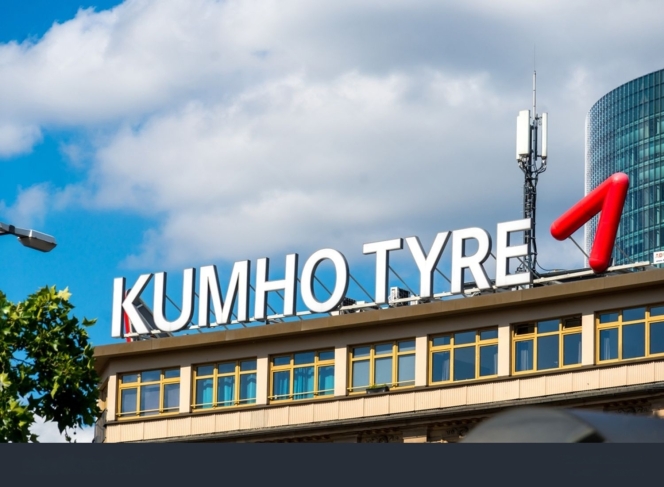
Kumho Tire will establish its first European manufacturing plant in Poland’s Opole region as the South Korean company seeks to expand its position in one of the world’s largest tyre markets.
The group said the factory is scheduled to begin initial operations in August 2028, subject to investment approval and licensing. Kumho plans to produce 6m units annually in the first phase and expand capacity in line with demand. Total planned investment is USD 587 million.
Kumho has spent recent years evaluating multiple European locations, including Poland, based on logistics, labour availability, infrastructure, market access and investment incentives. The company said Opole was selected as the optimal site owing to supply-chain stability within the EU and the region’s supportive operating conditions.
Europe accounts for about a quarter of global tyre consumption and is home to several major automotive manufacturers. The region represented roughly 26.6 per cent of Kumho’s sales last year. The company has previously relied on exports to serve European customers, which it said limited its competitiveness in the market.
The new plant is intended to strengthen Kumho’s ability to supply high-value-added products, including high-performance and larger-diameter tyres, to European vehicle makers.
Kumho currently operates eight production sites across South Korea, China, the US and Vietnam, with combined annual output of 65 millionunits. The Polish plant will complete what the company describes as a production network spanning Asia, Europe and North America.
Jung Il-taek, Kumho Tire’s Chief Executive, said: “The European market occupies a very important strategic position in the global tire industry,” adding that “Kumho Tire will go beyond simple exports and dramatically enhance premium brand value by strengthening quality and service competitiveness through local European production and supply.”
Tyre Stewardship Australia Appoints David Fraser As Chair As David Spear Steps Down
- By TT News
- December 04, 2025
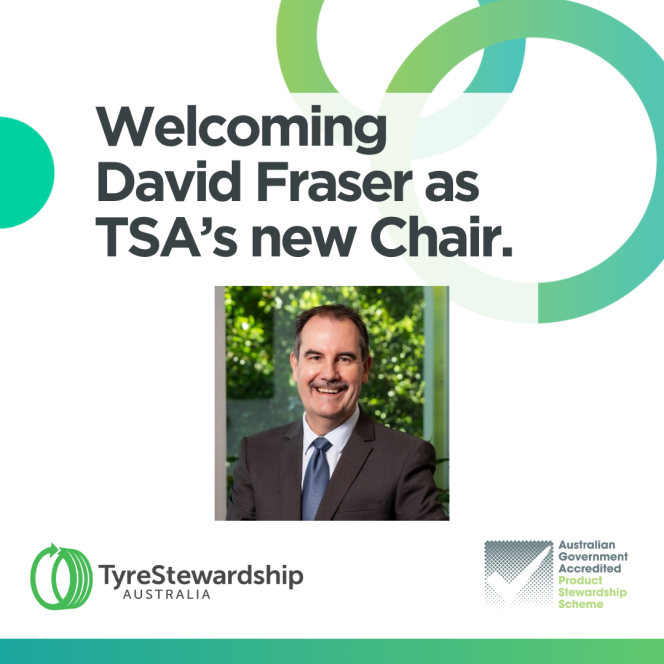
Tyre Stewardship Australia has appointed David Fraser as its new chair, succeeding David Spear after nine years in the role during a period of regulatory and industry change in the country’s tyre-recycling sector.
Spear’s departure closes what the organisation described as a challenging yet incredibly important chapter for its efforts to advance circular outcomes for Australia’s end-of-life tyres. TSA, an industry body backed by government and sector participants, oversees the national stewardship scheme and promotes recycling and re-use pathways for waste tyres, an area facing increasing scrutiny under Australia’s environmental and product-stewardship policies.
In a statement, TSA said it “thank[s] him for his unwavering support and dedication to driving circular outcomes for Australia’s end-of-life tyres”.
Fraser, a TSA director since 2023, brings experience in governance and compliance. He joins at a time when Australian states are tightening environmental standards and seeking to reduce landfill through higher recycling targets. TSA said Fraser has “deep understanding of our strategy, our challenges and the opportunities ahead”.
The organisation added: “We look forward to his leadership as TSA enters its next chapter.”
TSA also expressed appreciation to Spear “for your contribution and support of our mission”, and welcomed Fraser, saying it is “excited and ready for what lies ahead”.







Comments (0)
ADD COMMENT